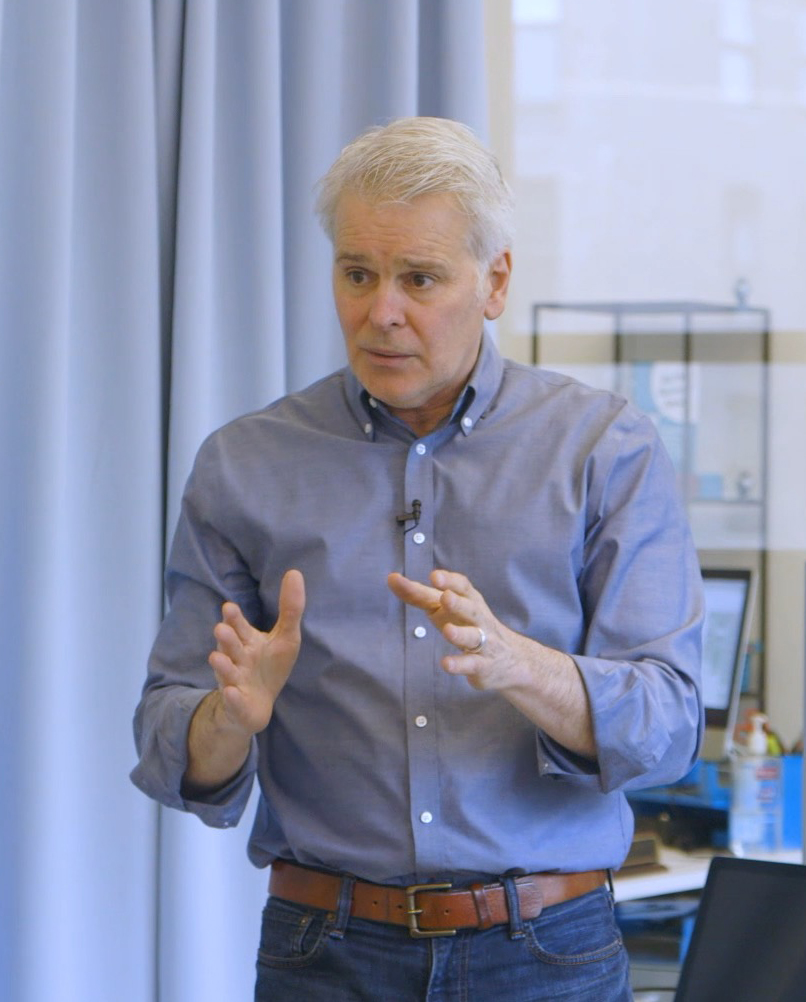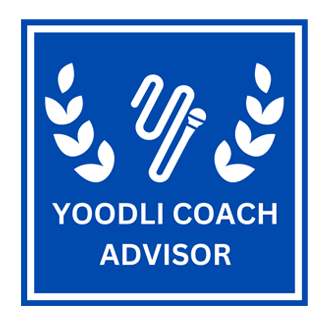Speech Coaching Services
Speech Coaching Services
Media Trainer
Knowing your message is not the same as showing your message. Learn the subtle nuances of delivery that raise authenticity and illicit positive responses. Your voice, your appearance, and your presence should all match your brand.
Presentation Consultant
Most presentations are heavy on the content but lack a strong sense of direction. Paul will teach you how to “find the gold” by filtering the information through your perspective to bring it into razor-sharp focus.
Speech Writing
Sometimes your ideas need a solid structure to put them on full display. Paul will take the time to fill in the blanks; this serves as the glue that holds everything together.
Speaking Coach
You need eyes and ears on the outside to show you the action steps that will lead to improvement. Stop repeating the same speaking mistakes! Master your nerves and master your consistent delivery. Whether it’s on-site, in the studio, or online, Paul’s customized approach gets results.
Accent Reduction
Understanding the rhythm of American English is the key to reducing any accent. There are definitely shortcuts and exercises that will guide you to increased confidence in your delivery.
Voice Enhancement
Enhancing your voice means getting more of your body involved. When speaking the same old way doesn’t cut it anymore, approaching your speech technique as a full-body expression gives you greater access to your true, natural voice.
Voiceovers
Changing rhythm and pitch can alter the entire meaning of a sentence or paragraph. Exploring voiceover techniques with Paul’s guidance is an adventure in creativity and authenticity.

Gestures and Movement to Engage Your Audience
Embrace the Power of Movement
You’ve practiced your speech, slides are ready, and you feel confident about the content. But have you considered how you’ll use movement and gestures? Body language is a crucial part of executive presence. In fact, studies show that over 50% of your message in conveyed through body language. Purposeful gestures and movement can transform a dull presentation into an engaging experience.
Use Gestures for Emphasis
Emphasizing key points with gestures helps to drive home critical ideas. For example, use an open palm to signal important facts or punch the air for impactful statements. Make sure you anticipate the delivery of every gesture so that they don’t seem rushed or out of sync. Small motions near your face draw the audience’s gaze. Just avoid fidgeting or playing with objects.
Find Your Natural Rhythm
Don’t force gestures that feel unnatural. Instead, allow them to flow organically as you speak. Holding one gesture until the impulse for the next gesture comes is a great technique for developing strong unspoken continuity. Always move around the stage or presentation area with purpose – this adds energy and variety. Just be sure not to pace excessively or make movements that distract from your message.
Command the Room
As a leader, you want to own the space and captivate your audience. Don’t hide behind a podium or desk. Move with confidence and make eye contact to connect with people in all areas of the room. This dynamic presence exudes authority.
Overcoming Public Speaking Fear and Nerves
Reframe Your Mindset
Rather than viewing public speaking as a daunting task, try to reframe it as an opportunity. You get to share your knowledge and insights with others who want to learn from you. Embrace the chance to educate, inspire and connect.
Prepare Thoroughly
Feeling underprepared breeds anxiety. Do your homework – research the topic deeply, organize your thoughts into an outline, and practice delivering your speech out loud. The more prepared you feel, the more confident you’ll be.

Visualize Success
Elite athletes use visualization to boost performance. You can too! Vividly imagine yourself speaking clearly, making eye contact, and engaging the audience. Visualize receiving warm applause as you conclude. This mental rehearsal calms nerves.
Start Strong
The open is crucial. Having a solid opening prepared allows you to ease into your speech after the first few lines. Use a startling statistic, rhetorical question or personal anecdote to grab attention from the start.
Tips For Reducing Filler Words
Record Yourself
Grab your phone and hit record the next time you practice your speech or presentation. Listening back makes it glaringly obvious where you tend to insert filler words. Once you’re aware of your verbal crutches, it’s easier to cut them out.
Replace Fillers
If you have a hard time going cold turkey on filler words, try replacing them with more intentional ones first. “So,” “well,” and “now” can serve as placeholders while you break the “um” habit.
Use Pauses Strategically
Instead of filling dead air with mindless filler, get comfortable with brief, purposeful pauses. They add emphasis, allow you to gather your thoughts, and sound far more polished than peppering your speech with “ums.” Over time, you’ll get more comfortable with silence. Let your thoughts fully form before speaking. Slow down just a bit. You’ll come across as more composed and in-command. And people will take you more seriously. Give it a try – you have nothing to lose and a lot of gravitas to gain.
Impromptu Speaking Tips for Executives
Get in the Right Mindset
Don’t let the fear of impromptu speaking psych you out. Reframe it as an opportunity to showcase your expertise and leadership. Take a deep breath and remind yourself that you’re the subject matter expert here. Have confidence in your knowledge and ability to think on your feet.
Structure Your Response
When put on the spot, it’s easy to ramble aimlessly. Instead, quickly organize your thoughts into a logical structure:
- Start with a concise opening line summarizing your main point.
- Follow with 2-3 key supporting details or examples.
- Conclude by reiterating your main idea with a closing statement.
This simple structure keeps you focused and prevents mindless meandering.
Bridge with Transitions
Smooth transitions between points make you sound polished and in control. Use verbal cues like “Additionally…”, “Furthermore…”, “On the other hand…” to guide listeners through your response. This buys you valuable thinking time while appearing articulate.
Engage With Stories and Analogies
Spice up impromptu responses with vivid examples or creative analogies that resonate with your audience. Personal stories and relevant case studies enliven dry facts/figures. This keeps listeners hooked and reinforces your key messages through memorable visuals.
Public Speaking Tips for Running Effective Meetings
Prepare like a pro
You’re the leader – so lead. Walk into that meeting room prepared, organized and confident. Review the agenda. Anticipate questions or concerns. Have data and visuals ready to drive your points home. A little prep work goes a long way.
Project authority
Body language is huge. Stand tall with your shoulders back. Speak clearly and make eye contact. Use hand gestures for emphasis, but don’t overdo it. Convey confidence and composure, even if you’re nervous inside. Fake it till you make it.
Keep it engaging
Nobody wants to sit through a droning monologue. Ask rhetorical questions. Use stories and examples to illustrate key points. Encourage discussion and differing viewpoints. Vary your pacing, pitch and volume. A lively, interactive meeting is an effective meeting.
Stay on track
Have an agenda and stick to it. Don’t get derailed by tangents or let things drag on. Keep revisiting your main objectives. If a topic needs more time, park it for a later discussion. Be willing to cut things short and summarize when needed. Respect everyone’s time.
Read the room
Pay attention to body language and energy levels. If folks look zoned out or restless, switch gears. Take a break, crack a joke, or open the floor to comments. Adjust your approach based on the vibe you’re getting. An engaged audience is a receptive audience.
Presentation Tips to Improve Your Public Speaking Skills
1 – Don’t Fear the Stage
Feeling some nerves before a presentation is normal. But don’t let the fear of public speaking hold you back. Visualize giving a confident, compelling talk and the audience being engaged. Proper preparation helps minimize anxiety.
2 – Connect with Your Audience
Make eye contact and speak directly to individuals rather than the entire room. Use relatable stories and examples to build rapport. Ask rhetorical questions to keep people involved. The more you connect, the more impactful and memorable your message will be.
3 – Focus on Body Language
Your physical presence and delivery style are just as important as your words. Stand tall with your shoulders back. Use purposeful hand gestures and facial expressions. Move around the stage strategically. Powerful body language conveys executive presence.
4 – Leverage Visuals Effectively
Simple, clean visuals reinforce your key points without being distracting. Use high-quality photos, charts, graphs and very little text on slides. Consider using a remote clicker or pointer to move freely. Effective visuals amplify your message.
5 – Embrace the Pause
Don’t be afraid of brief, intentional silences. Pausing allows your words to sink in and creates anticipation. It’s better than filler words like “um” or “uh.” Pivotal pauses make you sound more confident and compelling as a speaker.
Building Executive Presence: How to Come Across as a Trusted Advisor
Cultivate Confidence
Projecting confidence is key to being viewed as a trusted advisor. Walk into meetings with your head held high, make eye contact, and speak clearly and authoritatively. Avoid fidgeting or slouching – these undermine your credibility. Remember, you’re the expert they’ve hired.
Ask Thoughtful Questions
Don’t just regurgitate information – engage clients by asking insightful questions that demonstrate you understand their business and challenges. Active listening builds trust and rapport. Rephrase key points to show you’re absorbing what they say.
Offer Strategic Recommendations
As a trusted advisor, provide perspective that transcends just delivering services. Share your expertise by recommending strategic initiatives, process improvements or new technologies that could benefit the client’s business. Frame suggestions as opportunities, not criticisms.
Use Straightforward Language
Avoid jargon or complex terminology that could confuse clients. Use plain language to explain concepts clearly and concisely. If you need to reference technical terms, define them upfront. Clear communication enhances your credibility and authority.
Public Speaking Tips to Set the Tone and Take Charge
Commanding Attention
You may have brilliant ideas, but they’ll fall flat if you can’t capture and hold people’s attention. The moment you enter the room, your executive presence should radiate confidence and authority. Maintain a tall, upright posture with your shoulders back – you’ll automatically look and feel more self-assured. Slow your breathing and make eye contact with attendees as you stride purposefully to the front.
Dressing for Success
Dress for the leadership role you want, not the one you have. Well-tailored, quality business attire in colors that align with your industry conveys professionalism and status. Pay attention to details like polished shoes and simple, understated accessories. When you look polished and put-together, you signal that your presentation will be equally well-prepared.
Silence Speaks Volumes
Rather than immediately launching into your spiel, pause for a few seconds while surveying the room. This confident silence builds anticipation and makes people lean in to listen. Use this brief interlude to make eye contact with key attendees. You’ve established a sense of gravitas before uttering a word.
Vocal Power
Vary your vocal pitch, pace and volume to emphasize key points. Pause frequently to allow ideas to land. Most importantly, speak with conviction – choose precise words and straightforward language. You want to project clarity and decisiveness.
The way you carry yourself and use your voice has a huge impact. Practice strong posture, making eye contact, and speaking slowly and clearly. But also be yourself – authenticity is crucial. Breathe deeply to stay calm and in control.
How to Command the Room in Board Meetings
You’re the Expert Here
When fielding questions, keep in mind that you are the subject matter expert. Stakeholders look to you for guidance and clarity. Avoid getting flustered – take a deep breath if needed. Speak slowly and confidently, maintaining eye contact.
You’ve got this! The preparation you’ve done leading up to the meeting makes you an authority on the topic.
Ask for Clarification
If a question isn’t 100% clear, there’s no shame in asking for clarification. Repeat the question back if needed. This buys you time to formulate the best response. Asking for details also shows you are truly listening.
Defer When Appropriate
You don’t have to know everything off the top of your head. If a question veers too far into another department’s territory, say so respectfully. Offer to follow up with the appropriate person and get back to the stakeholder.
Bridge to Your Key Points
Look for opportunities to steer questions back toward reinforcing your main objectives. Use transition phrases like “The core issue here is…” or “What’s most important is…” Bridging helps keep you on message.
Boost Your Vocal Power: Tips to Ditch Up Speak and Speak with Confidence
What is Up Speak and Why You Should Avoid It
Ever noticed how some people’s voices seem to rise at the end of every sentence? That’s up speak, and it’s probably doing more harm to your professional image than you realize. Let’s dive into what it is and why you should kick this habit to the curb.
The Up Speak Lowdown
Up speak, also known as uptalk or high-rising terminal, is when you end your statements with a rising intonation, making them sound like questions. It’s like saying, “I’m Ron Burgundy?” instead of “I’m Ron Burgundy.” While it might seem harmless, this vocal quirk can seriously undermine your authority and credibility.
The Confidence Killer
Here’s the deal: when you use up speak, you’re unconsciously telling your audience that you’re unsure about what you’re saying. It’s like you’re asking for permission or validation with every sentence. In high-stakes conversations, this can be a real confidence killer. Your brilliant ideas might get lost in translation if your voice suggests you’re not fully committed to them.
Embrace the Power of the Pause
Pauses aren’t just for dramatic effect (though they’re great for that too). They give your audience time to digest what you’ve said and signal that you’re in control. Plus, they help you avoid filler words like “um” and “uh” that can make you sound unsure.
Remember, confidence isn’t just about what you say, it’s how you say it. Practice these techniques, and you’ll be commanding the room in no time. Your voice is a powerful tool – use it wisely!


